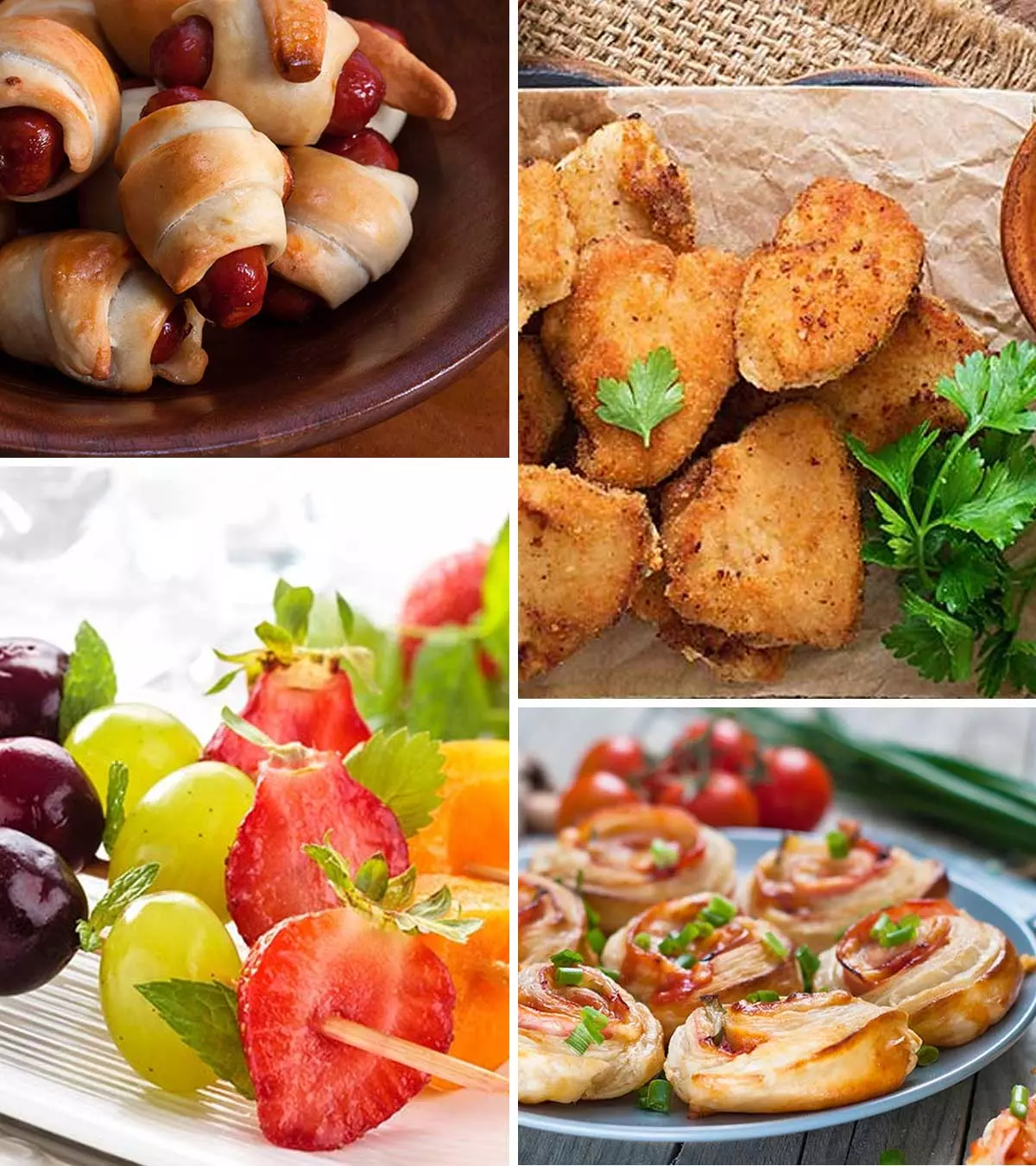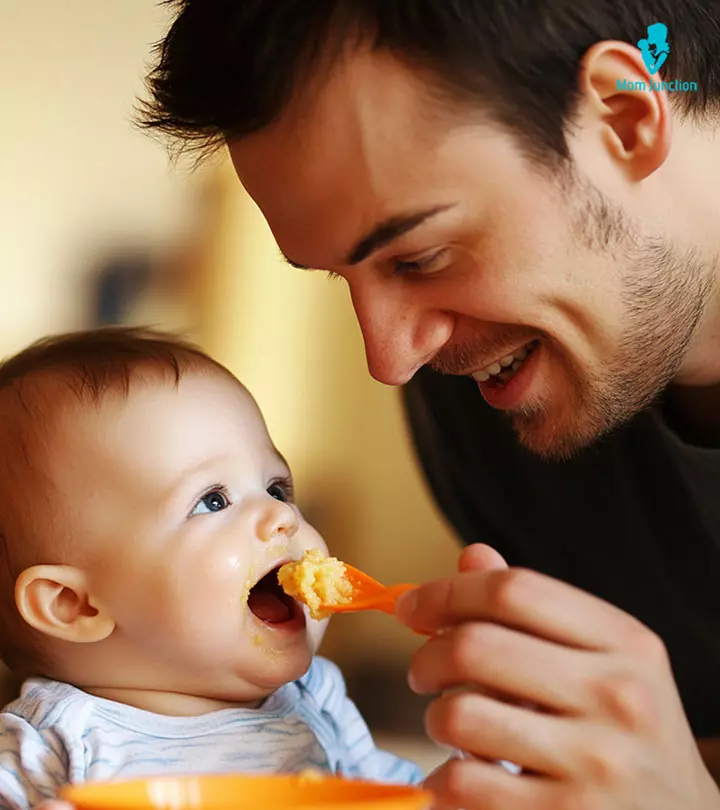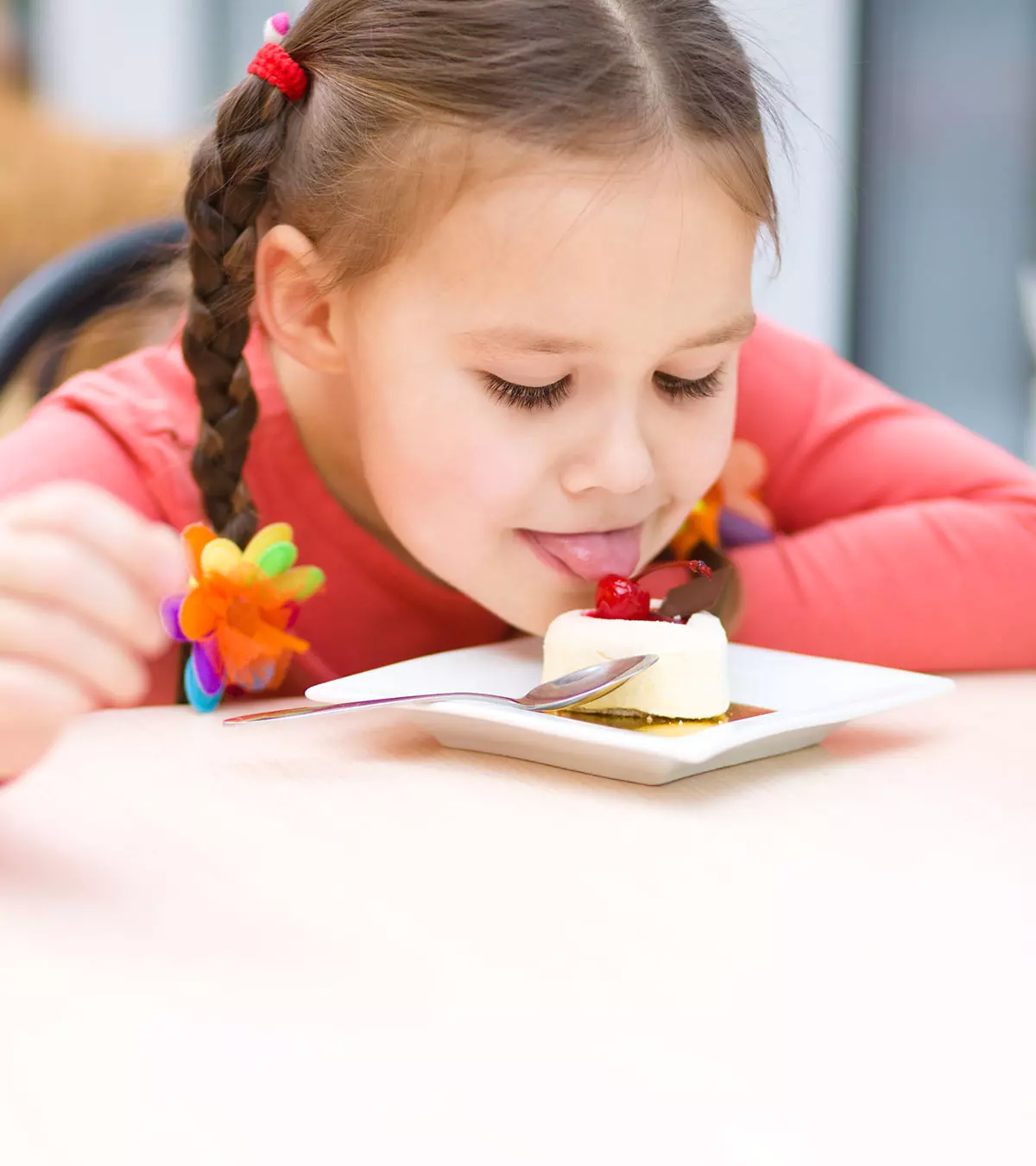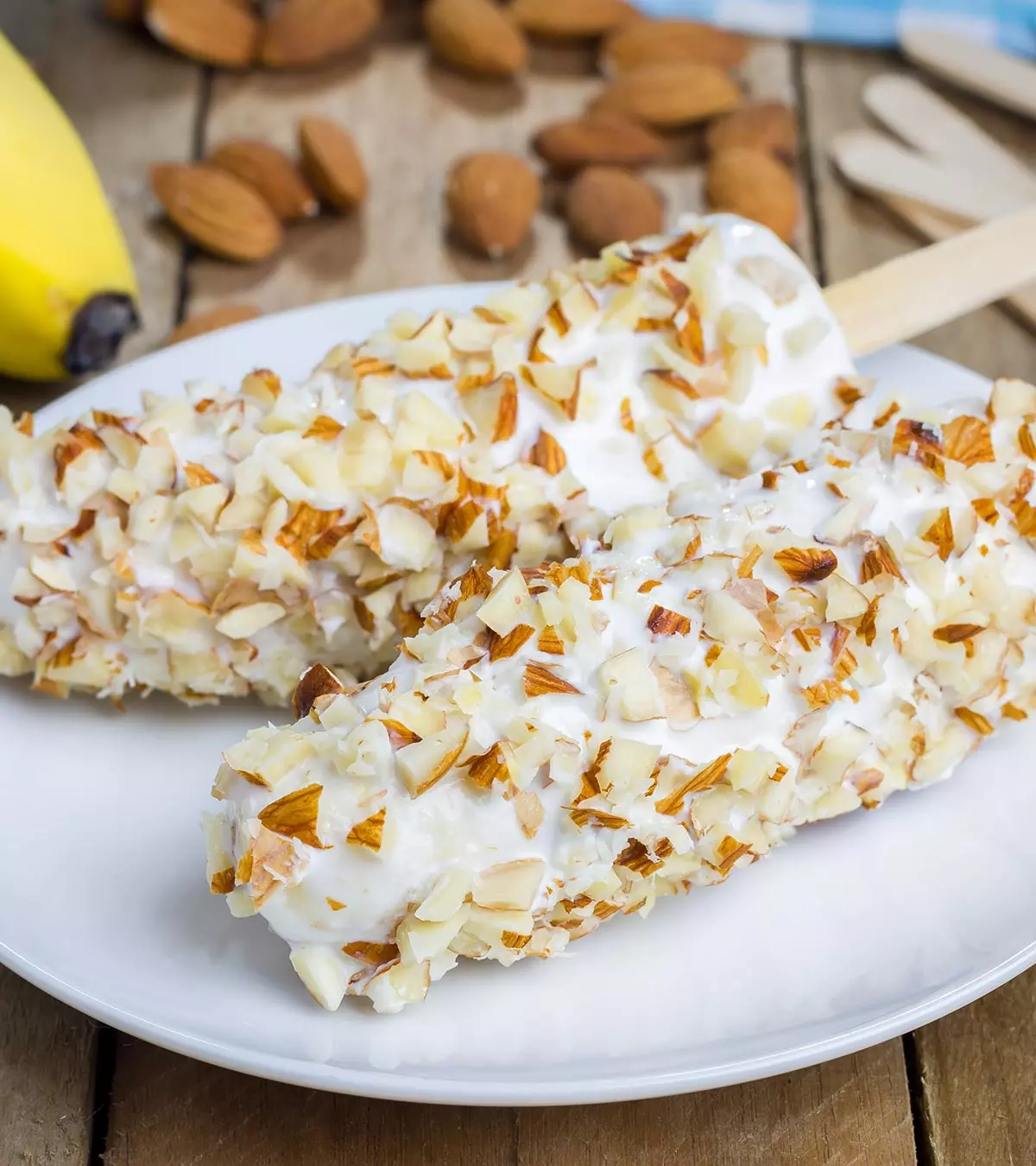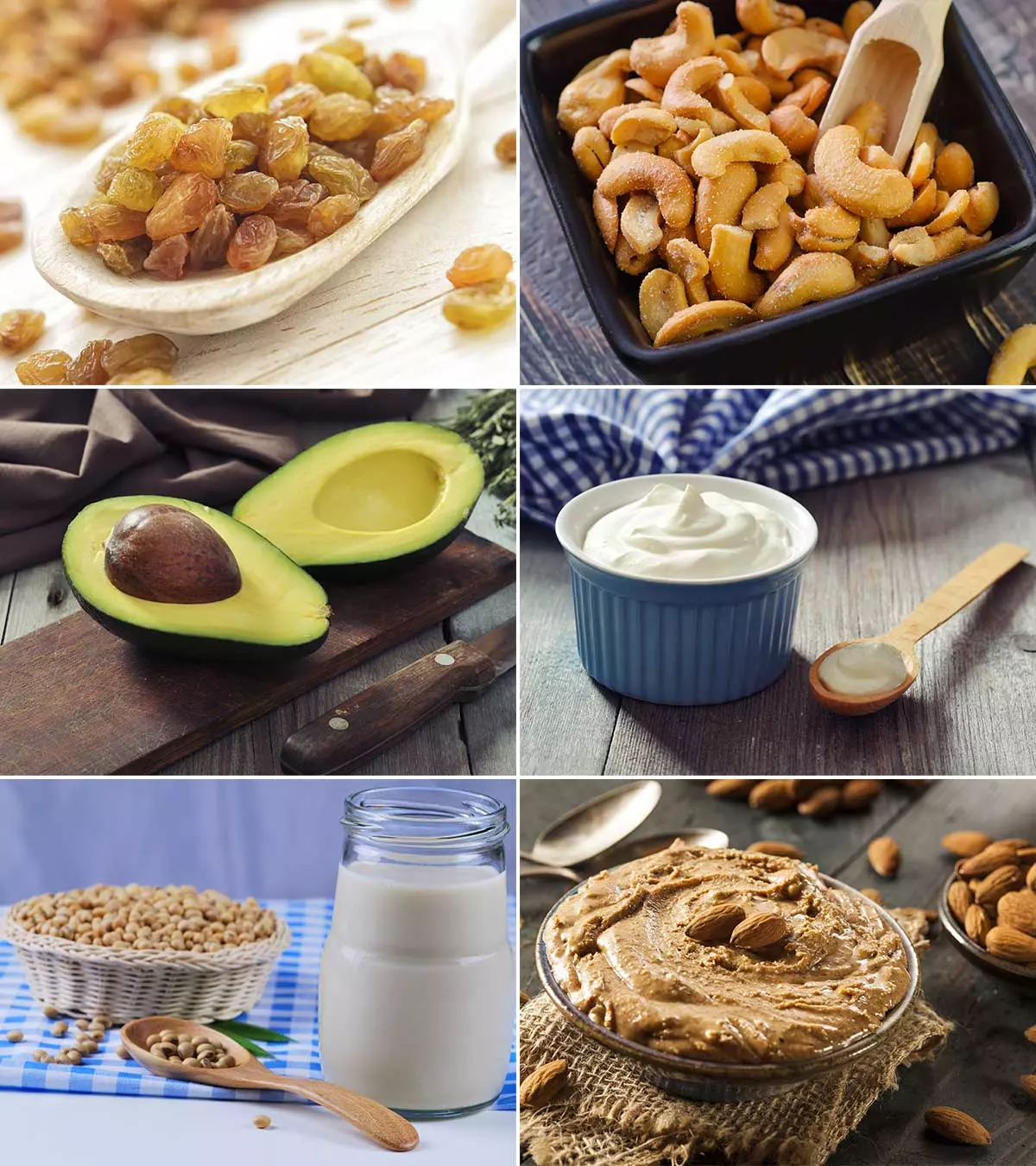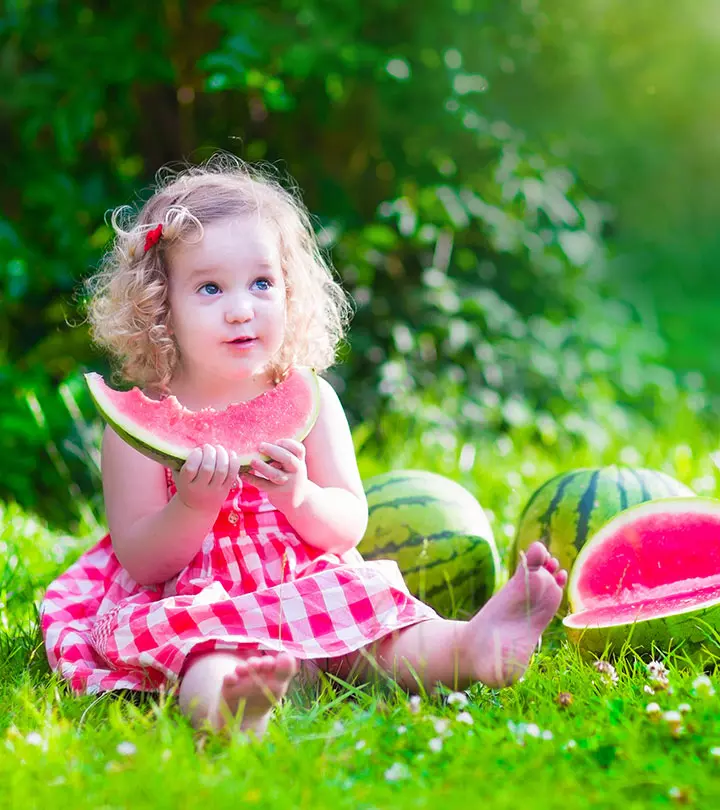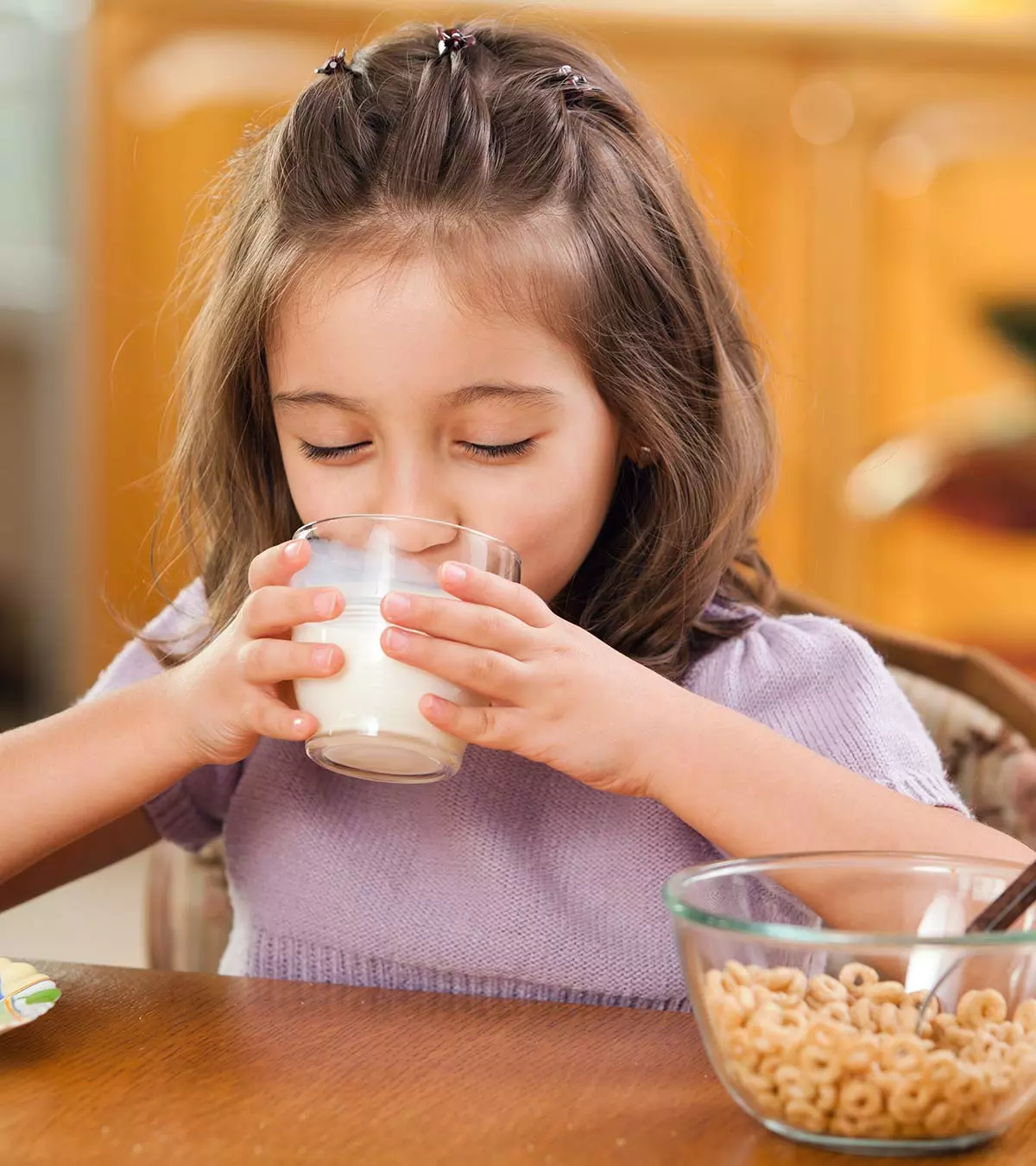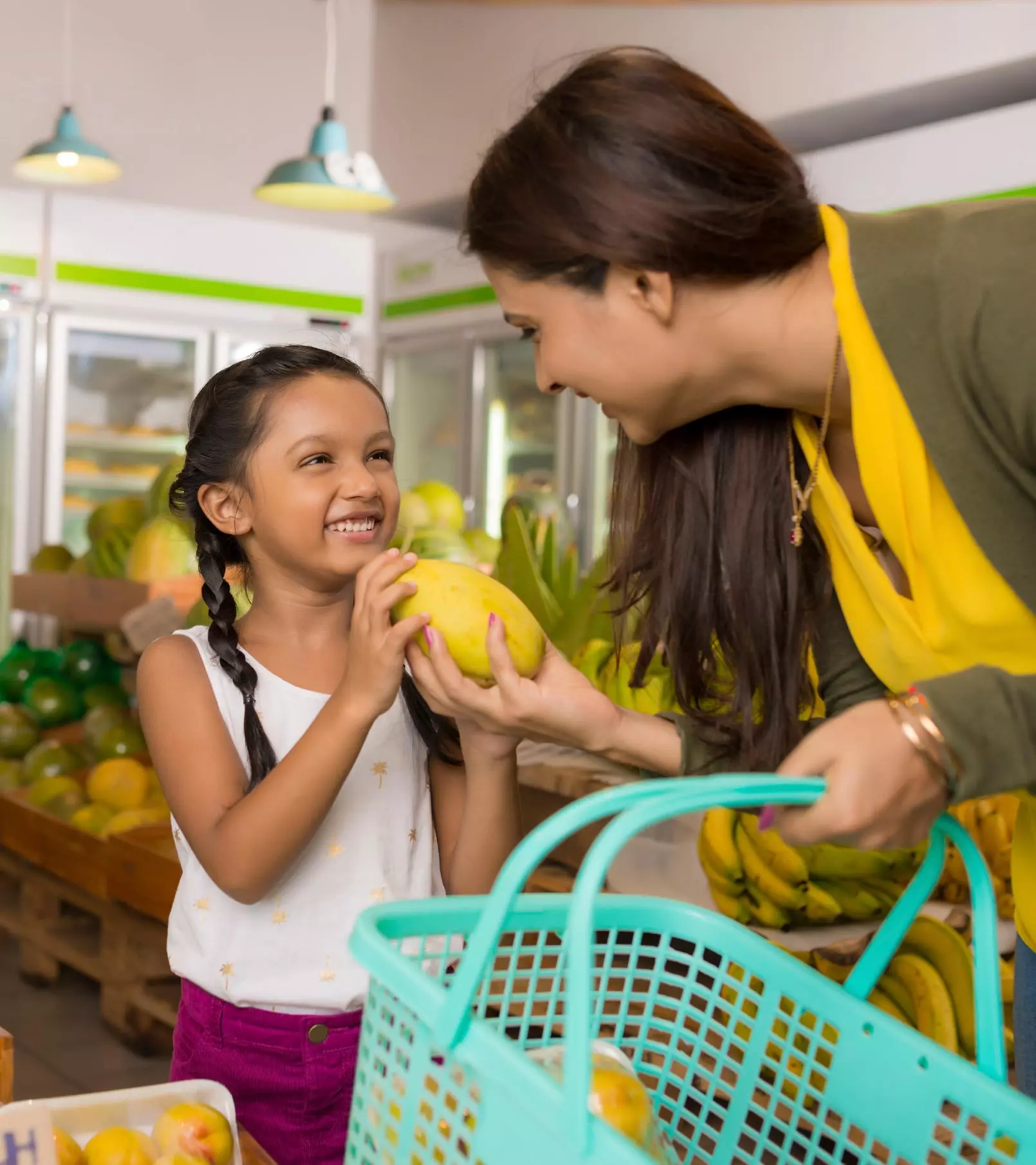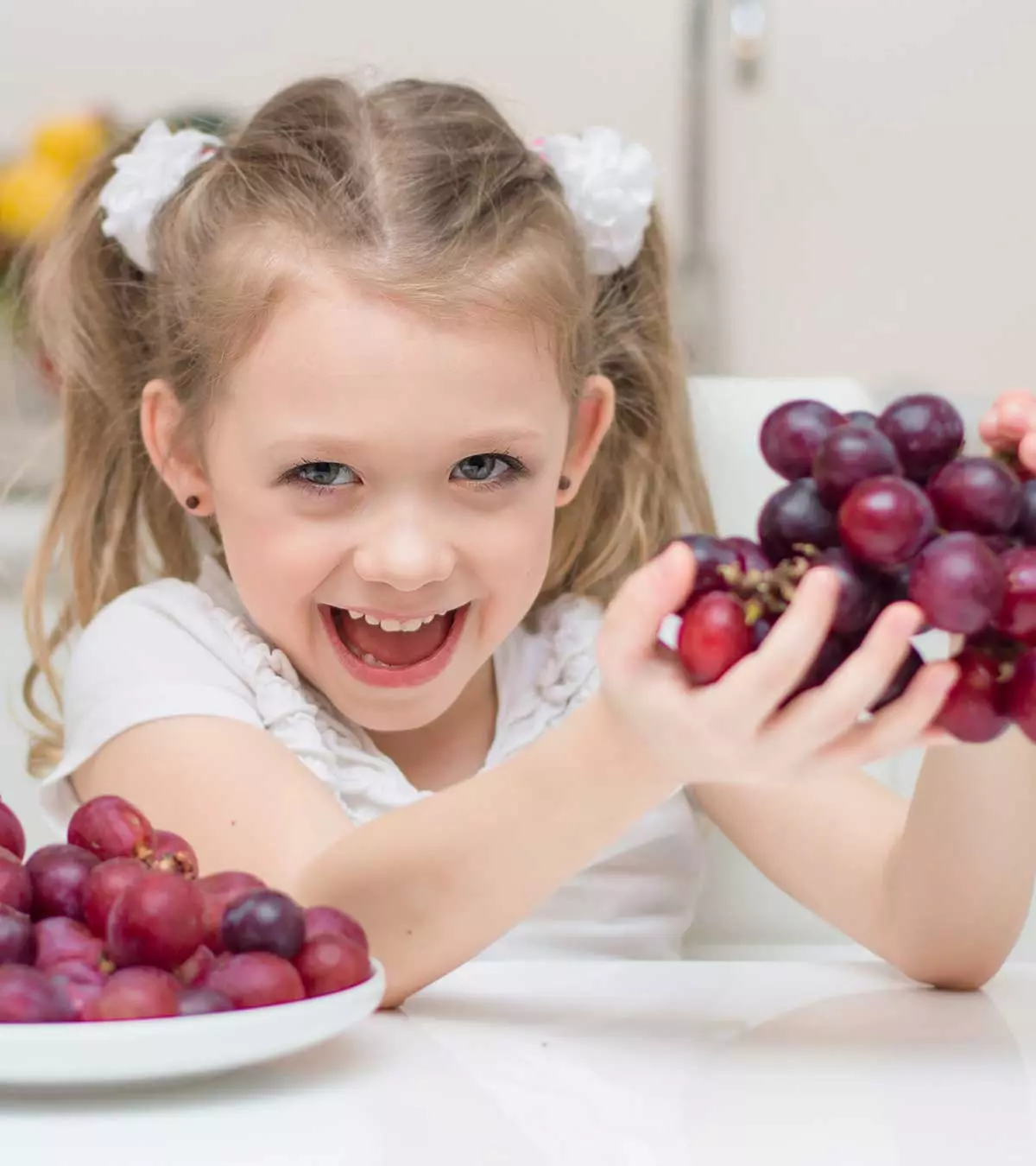
Image: ShutterStock

With over 8000 different types and 60 varieties of species, grapes are berries with multipurpose usage when it comes to food. The many health benefits of grapes for kids make them an ideal snack choice. They are nutritiously fulfilling with high vitamin and mineral content. They are quite juicy and tasty as well, making them an appealing fruit for children. Grapes are available in various colors such as white, purple, yellow, green, black, and red.
You can include grapes in your children’s lunches, as leisure time nibbles, or as snacks to curb their hunger after school. In addition, they make for a delicious and easy condiment that can be added to foods such as salads, sandwiches, cereal, smoothies, and even desserts. You can also make them into finger foods for parties and serve them with cheese on sticks.
So if your child loves grapes, read this post to know about its health benefits, including various recipes and different ways to enjoy grapes more deliciously.
Key Pointers
- Grapes are a great source of vitamins, minerals, and antioxidants.
- They have high water content and can keep children hydrated.
- Children can eat grapes directly or as a part of fruit salads, sandwiches, or with chocolate and cheese.
- For children below four, it is advised to serve sliced grapes to avoid choking.
- As grapes have high sugar levels, they should be consumed in moderation in a day.
Health Benefits Of Grapes For Kids
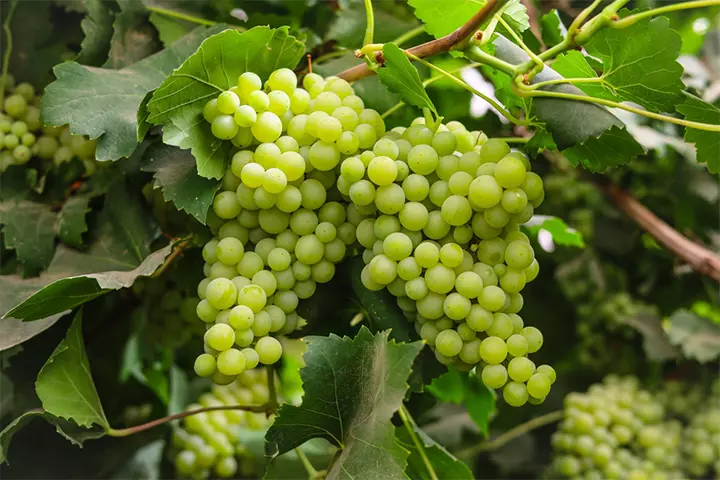
Image: Shutterstock
Introduce your kids to healthy eating habits with nutrient-rich fruits such as grapes. There are numerous health benefits associated with consuming this fruit, including:
- Grapes have high water content and help hydrate your kid. They also help regularize his bowel movement.
- Another amazing thing about grapes is that they are anti-inflammatory, and hence they can alleviate the symptoms of allergies in children, including watery eyes and running nose.
As long as your kid eats a balanced diet, it isn’t necessary to monitor his calorie count. Grapes add a decent amount of calories to the diet and are full of vitamins, potassium, and calcium.
3. Vitamin C
Vitamin C is a critical nutrient for your kid and important to contribute towards the growth of tissues.
4. Potassium
Sodium works with Potassium to control the body’s water balance, which in turn helps in maintaining a healthy blood pressure. It also reduces the risk of kidney stones.
5. Calcium
Apart from Potassium and Vitamin C, the wonder fruit is an excellent source of calcium. Calcium is required for the kid’s tooth and bone growth.
 Did you know?
Did you know?Why Should Kids Eat Grapes?
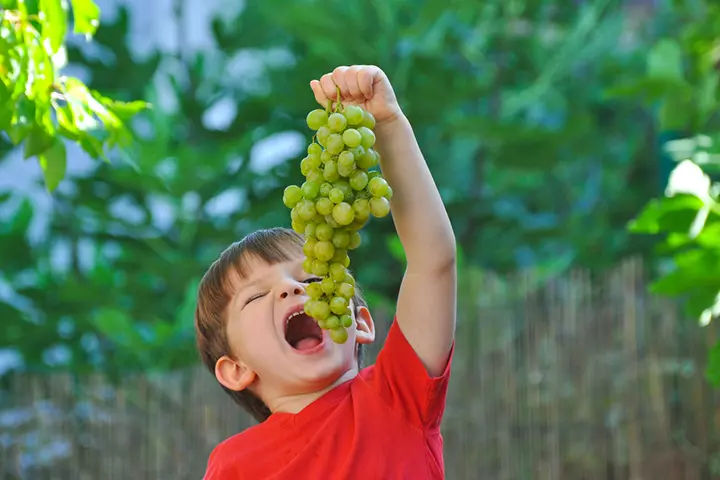
Image: Shutterstock
Grapes contain a combination of glucose and fructose, which makes them sweet and delicious. The energy from grapes lasts longer, as it takes a little longer than usual to digest the carbohydrates. Grapes are rich in potassium, calcium and vitamin C. Grape skin and grape seeds contain antioxidants that are good for kids (1).
Ways To Eat Grapes
You can have grapes in many different ways. Some ideas that we list here, include:
- Add them to fruit salad and sandwiches.
- Serve them with cheese.
- Use as a garnish on homemade cakes, custard, etc.
- Dried grapes (raisins) also offer several health benefits. Dry fruits for kids can be served as a snack or added to desserts.
- Frozen grapes served with melted chocolate- A recipe every kid will relish.
- Make a grape smoothie, your kid will love the color and the flavor.
- Juicing grapes is a healthy beverage option for any occasion and can be a great substitute for soda.
 Quick tip
Quick tipGrape Recipes For Kids
So, now that you know how grapes help you, let’s look at some delicious grape recipes here:
1. Grape smoothie
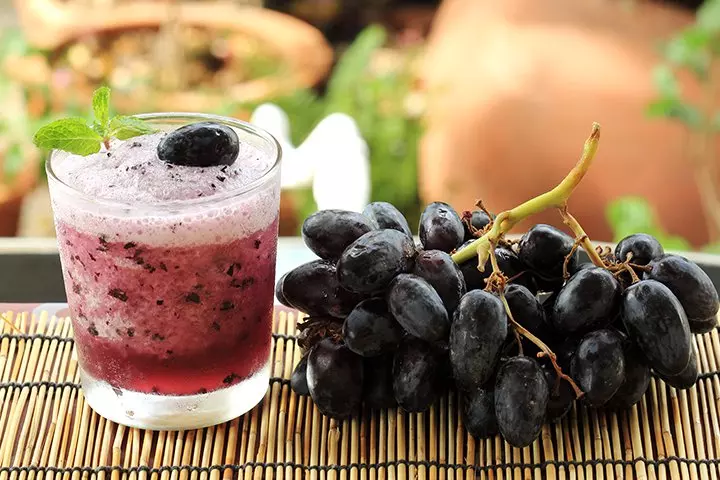
Image: Shutterstock
Grapes have high sugar content, and so they naturally sweeten the smoothie.
You Will Need:
- 1 cup seedless grapes
- 1 cup milk
- ½ cup vanilla yogurt
- 1 cup ice
How To:
- Put all the ingredients into the blender
- Blend them well and enjoy the smoothie.
2. Grape popsicles
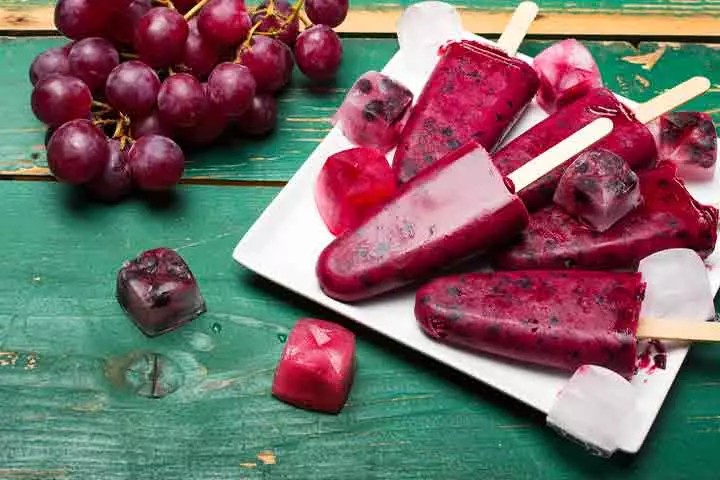
Image: Shutterstock
You Will Need:
- 3 cups seedless grapes
- 2-3 tbsp honey
- 1tbsp lemon juice
- 2tbsp grape juice
How To:
- Combine all ingredients in a blender.
- Set a clear blender containing grapes, honey, and grape juice on a pristine white countertop.
- Blend for 30-60 seconds until a completely smooth consistency is achieved.
- Utilize a clear blender showcasing the puréed grape mixture intended for popsicles.
- Pour the blended mixture into popsicle molds and insert popsicle sticks.
- Place the molds in the freezer, allowing them to freeze for a minimum of 5 hours, preferably overnight.
- Remove the popsicles from the molds and indulge in the frozen treat.
A Word Of Caution
Anything in excess might not be suitable for a kid. Apart from the calorie intake, you need to remember that grapes are full of fructose and glucose, which can lead to blood pressure spikes. Grapes pose a choking hazard. According to the New York State Department of Health, over 12,000 children are taken to a hospital emergency room yearly due to food-choking injuries. Always remember to cut grapes into smaller pieces when serving them to your kids to ensure safety.
Dr. Nicole Aaronson, a board-certified pediatric otolaryngologist from Wilmington, Delaware, says, “It is important that grapes be cut up into pieces as small children do not always chew their food well, and grapes can potentially become a foreign body in the airway that obstructs breathing.”
Frequently Asked Questions
1. Why are seedless grapes a great fruit choice for kids?
Grapes with seeds are a potential choking hazard. Hence, feeding seedless grapes to young children is considered safe and convenient. Seedless grapes are a grape variety that does not contain seeds, so there’s no need to remove seeds before feeding the grapes to children.
2. What does a kids-size serving of grapes look like?
One serving of grapes for kids may include about 16 grapes (3).
3. How should I properly wash and prepare grapes for children?
Rub and wash the grapes under cold running water and soak them for about ten minutes. Next, scrub them with salt using your hands and rinse under running water to remove the waxy upper layer. Once done, deseed and feed them to kids.
4. How much fruit should kids eat each day?
Children between two and three years should consume one cup of fruit daily. On the other hand, children aged four to eight and nine to 13 should have 1 to 1 ½ and 2 cups of fruits each day, respectively (4).
Grapes are a versatile fruit rich in vitamins, minerals, and health-promoting antioxidants. You can use grapes to make delectable smoothies and salads for your children. Alternatively, you can add them to different foods, such as pie, cake, and muffins, to enhance the dish’s nutritional value. Children can consume a cup of grapes as part of a well-balanced diet to reap their nutritional benefits. Cut grapes in halves to feed them to children under four years of age as whole grapes are a potential choking hazard. Encourage older children to eat whole grapes with skin rather than consuming grape juice.
Infographic: Amazing Benefits Of Grapes For Children
Grapes are packed with nutrients that offer many physical and mental health benefits for children. This infographic shares some fantastic health benefits of grapes for children and different ways to include them in their diet. Save and share it with other parents too!
Some thing wrong with infographic shortcode. please verify shortcode syntaxIllustration: Amazing Health Benefits Of Grapes For Kids
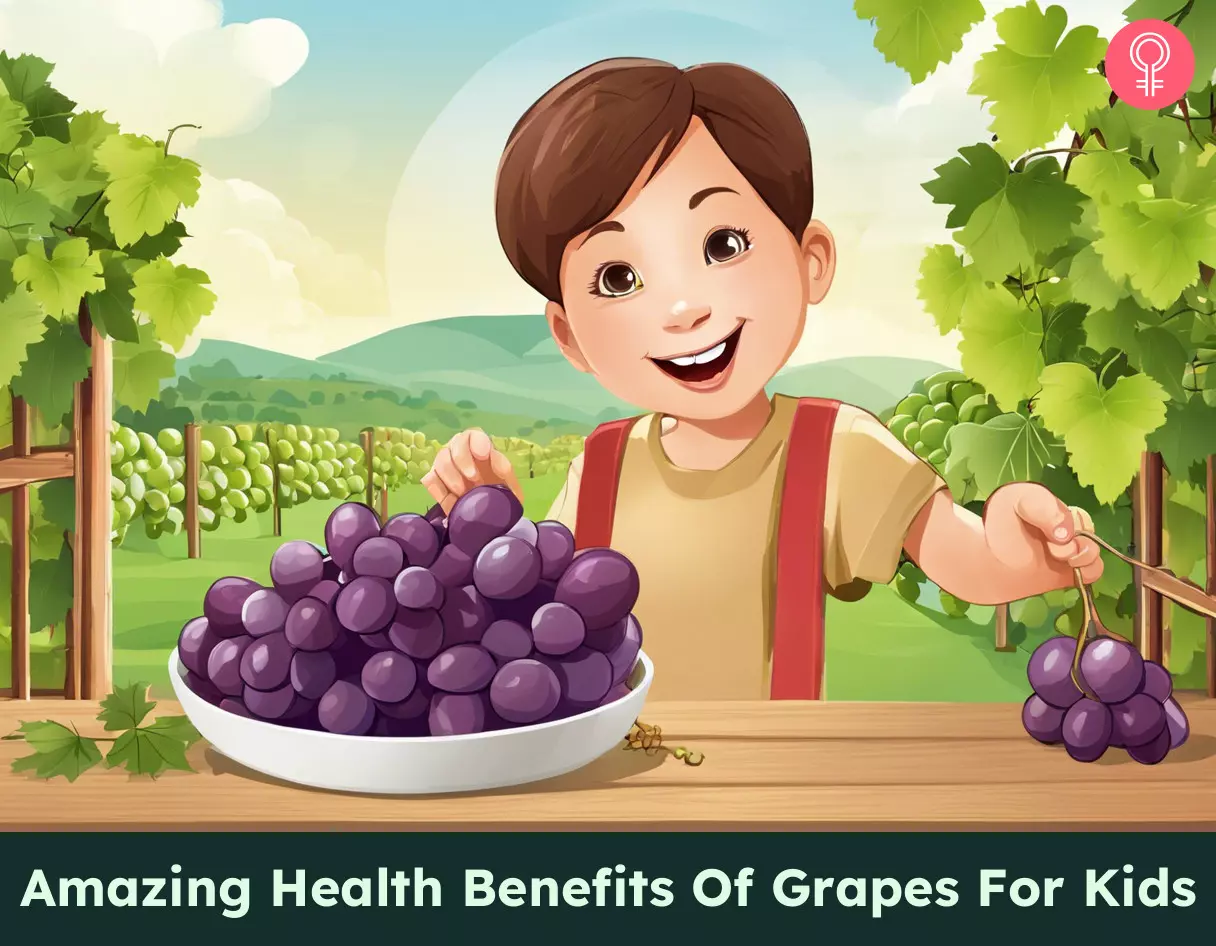
Image: Stable Diffusion/MomJunction Design Team
References
- Yusuf Yilmaz and Romeo T. Toledo; (2004); Major Flavonoids in Grape Seeds and Skins: Antioxidant Capacity of Catechin, Epicatechin, and Gallic Acid.
https://pubs.acs.org/doi/10.1021/jf030117h - Vitamin K.
https://ods.od.nih.gov/factsheets/VitaminK-HealthProfessional/ - Fruit and veggie toolkit for kids.
https://www.heart.org/en/healthy-living/healthy-lifestyle/lifes-essential-8/healthy-habits-for-kids - Progress on Children Eating More Fruit, Not Vegetables.
https://www.childrenscolorado.org/conditions-and-advice/sports-articles/sports-nutrition/fruit-and-vegetable-servings-for-children/
Community Experiences
Join the conversation and become a part of our nurturing community! Share your stories, experiences, and insights to connect with fellow parents.
Read full bio of Dr. Joel Warsh
- Dr. Nicole Aaronson is a double board-certified pediatric otolaryngologist with a MBA degree focusing on healthcare management. She worked at Thomas Jefferson University as clinical associate professor and has over five years of experience in teaching. Dr. Aaronson has founded and developed Pediatric Otolaryngology Prep, the first online question bank designed to prepare physicians for the Complex Pediatric Otolaryngology Exam. She writes and publishes articles professionally in medical journals and textbooks.
 Dr. Nicole Aaronson is a double board-certified pediatric otolaryngologist with a MBA degree focusing on healthcare management. She worked at Thomas Jefferson University as clinical associate professor and has over five years of experience in teaching. Dr. Aaronson has founded and developed Pediatric Otolaryngology Prep, the first online question bank designed to prepare physicians for the Complex Pediatric Otolaryngology Exam. She writes and publishes articles professionally in medical journals and textbooks.
Dr. Nicole Aaronson is a double board-certified pediatric otolaryngologist with a MBA degree focusing on healthcare management. She worked at Thomas Jefferson University as clinical associate professor and has over five years of experience in teaching. Dr. Aaronson has founded and developed Pediatric Otolaryngology Prep, the first online question bank designed to prepare physicians for the Complex Pediatric Otolaryngology Exam. She writes and publishes articles professionally in medical journals and textbooks.
Read full bio of Sindusha MS
Read full bio of Swati Patwal
Read full bio of Dr. Joyani Das






